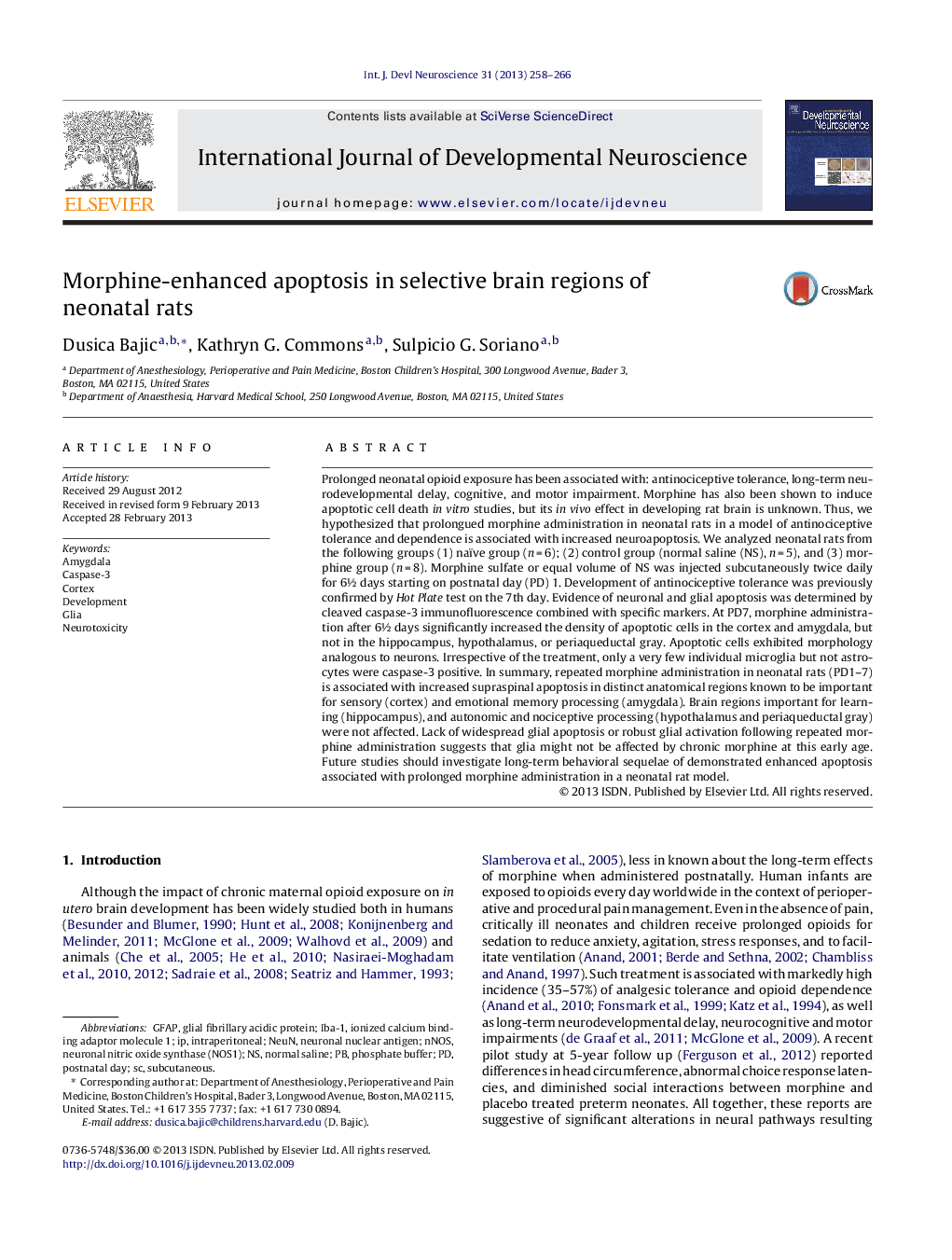| کد مقاله | کد نشریه | سال انتشار | مقاله انگلیسی | نسخه تمام متن |
|---|---|---|---|---|
| 2786173 | 1568404 | 2013 | 9 صفحه PDF | دانلود رایگان |

• Repeated morphine administration leads to antinociceptive tolerance in newborn rats.
• It is associated with increased density of apoptotic cells on postnatal day (PD) 7.
• Significant increase in density of apoptotic cells is found in the cortex and amygdala.
• Apoptotic cells exhibited morphology analogous to neurons.
• Only a very few individual microglia but not astrocytes were caspase-3 positive.
• Astrocytic activation following chronic morphine administration was sparse in PD7 rat.
Prolonged neonatal opioid exposure has been associated with: antinociceptive tolerance, long-term neurodevelopmental delay, cognitive, and motor impairment. Morphine has also been shown to induce apoptotic cell death in vitro studies, but its in vivo effect in developing rat brain is unknown. Thus, we hypothesized that prolongued morphine administration in neonatal rats in a model of antinociceptive tolerance and dependence is associated with increased neuroapoptosis. We analyzed neonatal rats from the following groups (1) naïve group (n = 6); (2) control group (normal saline (NS), n = 5), and (3) morphine group (n = 8). Morphine sulfate or equal volume of NS was injected subcutaneously twice daily for 6½ days starting on postnatal day (PD) 1. Development of antinociceptive tolerance was previously confirmed by Hot Plate test on the 7th day. Evidence of neuronal and glial apoptosis was determined by cleaved caspase-3 immunofluorescence combined with specific markers. At PD7, morphine administration after 6½ days significantly increased the density of apoptotic cells in the cortex and amygdala, but not in the hippocampus, hypothalamus, or periaqueductal gray. Apoptotic cells exhibited morphology analogous to neurons. Irrespective of the treatment, only a very few individual microglia but not astrocytes were caspase-3 positive. In summary, repeated morphine administration in neonatal rats (PD1–7) is associated with increased supraspinal apoptosis in distinct anatomical regions known to be important for sensory (cortex) and emotional memory processing (amygdala). Brain regions important for learning (hippocampus), and autonomic and nociceptive processing (hypothalamus and periaqueductal gray) were not affected. Lack of widespread glial apoptosis or robust glial activation following repeated morphine administration suggests that glia might not be affected by chronic morphine at this early age. Future studies should investigate long-term behavioral sequelae of demonstrated enhanced apoptosis associated with prolonged morphine administration in a neonatal rat model.
Journal: International Journal of Developmental Neuroscience - Volume 31, Issue 4, June 2013, Pages 258–266